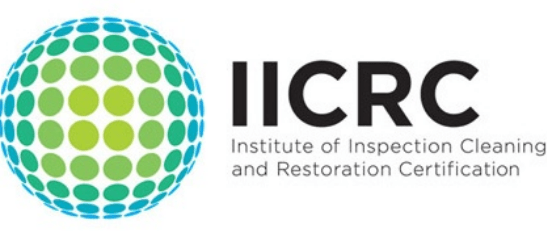Did you know that almost 40% of homeowners have reported loss due to water damage? It’s a staggering number that we’re here to help reduce.
Whether it’s a leaky roof, a burst pipe, or a flood, water damage can leave you feeling devastated and at a loss on how to proceed. We’ve been there and we know the sinking feeling of seeing your prized possessions seemingly ruined.
But not all is lost. Stick with us as we navigate through a practical, step-by-step guide on how to salvage your belongings after water damage. You’d be surprised how much can be rescued with the right approach.
Assessing the Water Damage
Before we can start salvaging our belongings, we need to properly assess the extent of the water damage. It’s not just about checking the visible damage, there’s a lot more to it. We need to determine the type of water that has caused the damage, the duration for which the water has been standing, and the amount of space that has been affected.
We’ll need to be careful, though, as water damage can be dangerous. We should be on the lookout for electrical hazards and structural damage that may pose a risk. Mold and bacteria growth is another factor we need to consider, as these can lead to health issues.
Now, let’s talk about the type of water. There are three categories: clean water (from rain, condensation, leaking pipes), grey water (dirty water from dishwashers, washing machines, clean toilets), and black water (sewage, flooding from rivers, standing water). The type of water not only determines the restoration process but also the potential health risks.
The length of time the water has been standing is also critical. The longer the water sits, the more chance there’s for mold and bacteria to grow, and the more damage it can cause to our belongings.
Lastly, we’ll need to assess the affected area. If it’s just a small area, we might be able to manage the cleanup ourselves. But if it’s a large area or if there’s structural damage, we’ll need professional help. Remember, a proper assessment is key to effective damage control and restoration.
Safety Precautions Before Cleaning
Often, we underestimate the importance of taking safety precautions before initiating the cleanup process after water damage. It’s not just about protecting our belongings, but also about ensuring our well-being. Here are some steps we recommend taking before you begin.
First, we must remember to turn off the electricity. This is crucial because water and electricity are a dangerous combination that can lead to electrocution. So, before you start salvaging your belongings, make sure the power is off.
Second, we need to dress appropriately. This includes wearing gloves, masks, and waterproof boots to protect ourselves from potential hazards like contaminated water or mold spores. It’s better to be safe than sorry.
Third, let’s make sure our space is well-ventilated. Open windows and doors to allow fresh air in which can help dry the area and reduce the potential growth of mold. However, if the water damage is due to a flood, wait until authorities have declared your area safe before opening doors and windows.
We must never attempt to handle hazardous materials ourselves. If you suspect the presence of asbestos, lead, or other harmful substances, call a professional. They’re equipped to handle such situations safely.
Drying and Cleaning Strategies
Once we’ve taken the necessary safety precautions, we can start strategizing on the best ways to dry and clean our water-damaged items. The keys to restoring our belongings are rapid response and appropriate handling. We’ve got to act fast, but we also have to be smart about it.
Air drying is our first line of defense against water damage. We’ll want to remove our items from the wet area and spread them out in a dry, well-ventilated space. Open windows and use fans to circulate air and expedite drying. Remember, we shouldn’t place the fans directly on the items as this could cause additional damage.
Next, let’s focus on cleaning. Mild detergent and clean water are usually sufficient for most items. However, for delicate materials like paper or textiles, we might need professional help. Don’t be afraid to reach out to conservation experts if we’re unsure how to proceed.
For hard surfaces, we can use a damp cloth to wipe away any dirt or debris. We should avoid using too much water as it can further saturate the material. If mold has begun to form, we’ll need to use a solution of one cup bleach to one gallon of water.
Restoring Damaged Belongings
With drying and cleaning out of the way, we can now turn our attention to restoring our damaged belongings back to their original state. This step can be challenging but it’s crucial for making our items usable again.
For hard-surfaced items, we’ll need to sanitize them to eliminate any remaining bacteria. This is best done with a mixture of bleach and water – one cup of bleach for every five gallons of water should do the trick. We can apply the mixture using a spray bottle, then let the items air dry. It’s important to remember to wear gloves and a mask during this process to protect ourselves.
As for soft items like clothes, we can start by rinsing them with clean water. After that, we’ll need to wash them using a heavy-duty detergent and hot water, if the fabric allows. For items that can’t be washed, like mattresses and upholstered furniture, we’ll have to call in a professional cleaning service. It’s worth noting that not all items may be salvageable, especially if they’ve been soaked for a long time.
Electronics present a unique challenge. It’s best not to turn them on until they’re completely dry, to avoid short circuits. If they don’t work after drying, we may need to consult a professional.
Restoring our belongings isn’t just about making them functional again – it’s also about ensuring they’re safe to use. If we’re in any doubt, it’s better to err on the side of caution and replace the item. After all, our health and safety are worth more than any possession.
Preventing Future Water Damage
Having taken steps to restore our damaged belongings, let’s now focus on how we can prevent water damage from happening again in the future. Prevention is always better than cure, and in this case, it’ll save us time, money, and the distress of losing sentimental possessions.
Firstly, we need to regularly inspect our homes for potential water damage threats. This includes checking the roof for leaks, ensuring gutters and downspouts are clear, and making sure our plumbing is in good working order. We shouldn’t overlook even small leaks, as they can quickly escalate into major issues.
Next, we should invest in a good-quality sump pump and keep it well-maintained. A sump pump can be a lifesaver in preventing basement flooding, especially during heavy rain. Let’s also install water leak detectors around our homes, particularly near appliances and areas prone to leaks. These devices will alert us to any water leaks before they become a serious problem.
Lastly, let’s be mindful of our landscaping. Sloping our yard away from our home can prevent water from pooling around the foundation and seeping into our basement. Also, planting trees and shrubs a safe distance from our house will safeguard our foundation from potential root damage.
Water damage prevention requires consistent effort, but the peace of mind it offers is definitely worth it. Let’s not wait for another disaster to strike. If we take these preventative measures now, we’ll save ourselves a lot of heartache in the future.
Frequently Asked Questions
What Are Some Common Causes of Water Damage in Homes?
We’ve found that common causes of water damage in homes often include leaky roofs, busted pipes, faulty appliances, and severe weather conditions. It’s important to regularly check these areas to prevent potential water damage.
How Do I Determine the Extent of Water Damage for Insurance Purposes?
We’d suggest documenting everything thoroughly. Take pictures and videos of all damage. Keep damaged items for evidence. Don’t forget to record repair efforts and costs. It’s crucial for successfully filing your insurance claim.
Are There Any Health Risks Associated With Water Damage Cleanup?
Yes, there’re health risks involved with water damage cleanup. We could be exposed to harmful bacteria, mold, and sewage. It’s crucial we wear protective gear and follow safety protocols to minimize these risks.
How Long Does It Typically Take for a Professional to Restore Water-Damaged Belongings?
We can’t give an exact timeframe as it varies. It depends on the extent of the damage and the type of items. But, rest assured, professionals work efficiently to restore your belongings as quickly as possible.
What Are the Potential Long-Term Effects on My Property if Water Damage Is Not Properly Addressed?
If we don’t properly address water damage, we’ll face long-term effects like mold growth, structural damage, and decreased property value. It’s essential we act quickly to mitigate these potential issues.


